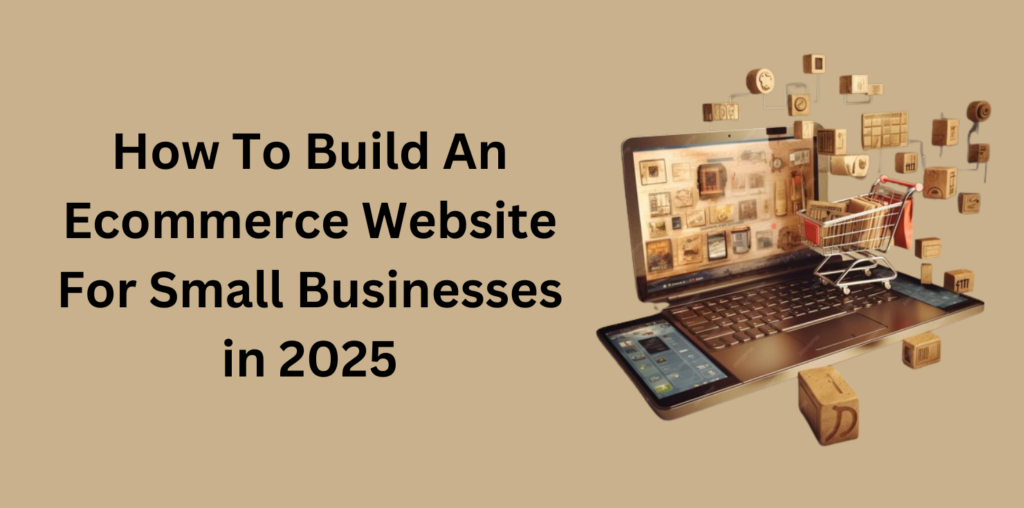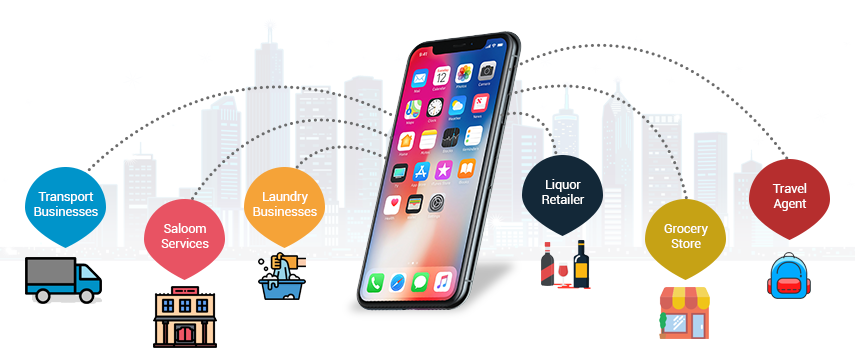In today’s digital-first world, having an e-commerce website is essential for any small business looking to compete and grow. With advancements in technology and changing consumer behaviour, e-commerce has become the go-to platform for shopping, with millions of customers opting to buy products online. Building an e-commerce website might seem overwhelming, especially for small business owners with limited resources. However, with the right guidance and tools, creating a professional, functional e-commerce site is entirely achievable.
In this blog, we’ll explore the steps to build an e-commerce website for small businesses in 2025, covering everything from selecting the right platform to optimising for the best customer experience. Let’s dive in!
1. Define Your E-Commerce Goals and Target Audience
Before diving into the technical aspects of website building, it’s essential to clearly define your business goals. Start by identifying the purpose of your e-commerce website. Are you looking to increase sales, grow your brand, reach a broader audience, or all of the above? Knowing your objectives will help shape the design and features of your site.
For an optimised and efficient development process, consider using e-commerce app development solution. This platform provides customizable tools to create a seamless online shopping experience, helping you achieve your business goals and engage your target audience effectively.
2. Choose the Right E-Commerce Platform
The next crucial step is selecting a suitable e-commerce platform. In 2025, there are several robust options available, each offering different features and customization options. Popular platforms include:
- Shopify: Ideal for beginners and small businesses, Shopify is user-friendly, offers excellent customer support, and includes plenty of apps and themes.
- WooCommerce: Built on WordPress, WooCommerce offers flexibility and control, perfect for those who want to fully customise their site.
- Magento (Adobe Commerce): A powerful platform with advanced features and scalability, best for growing businesses with complex needs.
- BigCommerce: Known for its SEO features and scalability, BigCommerce is great for businesses looking to expand.
When choosing a platform, consider factors like pricing, user-friendliness, scalability, and available integrations. Opt for one that aligns with your budget and long-term business plans.
3. Secure a Domain Name and Reliable Hosting Service
Your domain name should be short, memorable, and relevant to your brand. Many hosting providers, such as GoDaddy, Bluehost, and HostGator, offer domain name registration alongside their hosting services. If you’re using Shopify or a similar platform, you can buy a domain directly through them for added convenience.
For hosting, select a reliable service that provides fast loading times, 99.9% uptime, security features, and customer support. A slow or unreliable website can result in lost sales and poor customer satisfaction, so this is a critical aspect to consider.
4. Design Your Website with the User in Mind
A well-designed website is essential for capturing attention and guiding visitors to make a purchase. Here are some tips to consider for creating an intuitive and appealing design:
- Choose a Responsive Design: Ensure that your website is optimised for mobile users. In 2025, a significant percentage of online purchases are expected to come from mobile devices.
- Easy Navigation: Your website should be easy to navigate, with clearly defined categories and product filters. Avoid clutter and keep the design clean.
- High-Quality Images and Videos: Showcasing your products through high-resolution images and short videos gives customers a better view of what they’re buying. Consider 360-degree images for a more immersive experience.
- Consistent Branding: Use consistent colours, fonts, and logos that reflect your brand identity, making your website memorable and trustworthy.
- CTA Buttons: Ensure that your Call-to-Action buttons (like “Add to Cart” or “Buy Now”) are prominent and easily accessible.
5. Add Essential E-Commerce Features
To create a functional e-commerce website, incorporate features that enhance the customer experience and streamline the buying process. Some essential features include:
- Product Pages with Descriptions: Each product page should include detailed descriptions, specifications, and pricing. Clear, informative descriptions help customers make informed buying decisions.
- Shopping Cart and Wishlist: Make it easy for customers to save items to their cart or wishlist. This feature can increase the likelihood of repeat visits and future sales.
- Secure Payment Gateway: Offer multiple secure payment options such as credit cards, debit cards, PayPal, and digital wallets. Use trusted payment gateways like Stripe or PayPal to instil customer confidence.
- User Reviews and Ratings: Reviews add credibility to your products, as potential buyers trust feedback from other customers.
- Shipping and Return Information: Clearly display shipping rates, delivery times, and return policies. Transparent information fosters trust and reduces potential post-purchase dissatisfaction.
- Customer Support: Consider live chat, FAQs, and an easy-to-find contact page to help customers with their inquiries.
6. Optimise for SEO and User Experience
SEO (Search Engine Optimization) is critical to driving traffic to your e-commerce site. Optimising your website for search engines improves visibility, allowing potential customers to find your site. Focus on the following:
- Keyword Research: Use tools like Google Keyword Planner or SEMrush to find keywords relevant to your products.
- Optimised Product Descriptions: Write unique, engaging product descriptions that include keywords naturally. Avoid duplicate content, as it can harm your SEO.
- Page Speed Optimization: Slow-loading websites can deter users. Compress images, use caching, and choose a reliable hosting provider to improve load times.
- Mobile Optimization: With the rise of mobile shopping, ensure your site is mobile-friendly. Google prioritises mobile-friendly sites, which improves your search ranking.
- Structured Data Markup: Add structured data to help search engines understand your content. This can improve how your website appears in search results, with product prices and reviews displayed directly in search snippets.
7. Implement Marketing and Sales Strategies
Once your website is live, it’s time to attract customers. Small businesses can benefit from a variety of online marketing strategies, including:
- Social Media Marketing: Platforms like Instagram, Facebook, and Pinterest are ideal for showcasing products and engaging with your audience.
- Email Marketing: Collect email addresses on your website to send promotions, product updates, and newsletters. Email marketing has a high ROI and is a valuable tool for e-commerce.
- Influencer Marketing: Collaborate with influencers in your niche to reach new customers. Influencers can provide social proof and increase brand visibility.
- PPC Advertising: Invest in Pay-Per-Click ads on platforms like Google Ads to drive targeted traffic. PPC can be effective for small businesses looking to increase brand awareness quickly.
8. Focus on Customer Retention and Loyalty
Retaining customers is often more cost-effective than acquiring new ones. Establish a loyalty program to reward repeat customers, offer exclusive discounts, or implement a referral program. Customer retention efforts include:
- Personalised Email Campaigns: Use customer data to send personalised product recommendations and reminders.
- Loyalty Programs: Offer points or discounts for repeat purchases.
- Customer Service Excellence: Provide exceptional customer support to resolve issues quickly and build trust.
9. Test and Improve Your Website
Testing and improving your website continuously is key to e-commerce success. Use analytics tools like Google Analytics to track visitor behaviour, conversions, and bounce rates. Identify pages with high bounce rates and make adjustments to improve them.
A/B testing is another effective way to identify what works best for your site. Test different versions of product pages, CTAs, and checkout processes to see which performs better. By continually optimising, you’ll create a smoother, more profitable shopping experience for customers.
10. Prioritise Security and Compliance
Cybersecurity is a major concern for e-commerce websites in 2025. Small businesses need to protect customer data and comply with regulations such as GDPR (General Data Protection Regulation). Implement security protocols like SSL certificates, firewalls, and regular updates to safeguard your website from threats.
Use secure payment gateways and data encryption to reassure customers that their transactions are safe. Make sure to communicate your security measures to build customer confidence.
Conclusion
Building an e-commerce website for small businesses in 2025 is simpler and more efficient than ever, thanks to advanced platforms and accessible tools. By focusing on a user-friendly design, optimising for SEO, and implementing effective marketing strategies, small businesses can create a strong online presence and compete effectively in the digital marketplace. With a well-planned approach, your e-commerce site can drive sales, attract new customers, and help grow your brand in today’s competitive landscape.
At Appic Softwares, we offer comprehensive mobile app development solutions to support small businesses in achieving their digital goals. Contact us today to bring your e-commerce vision to life!



